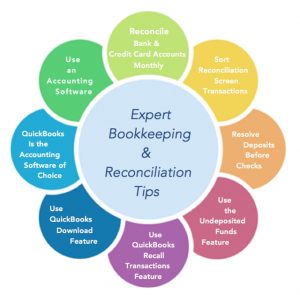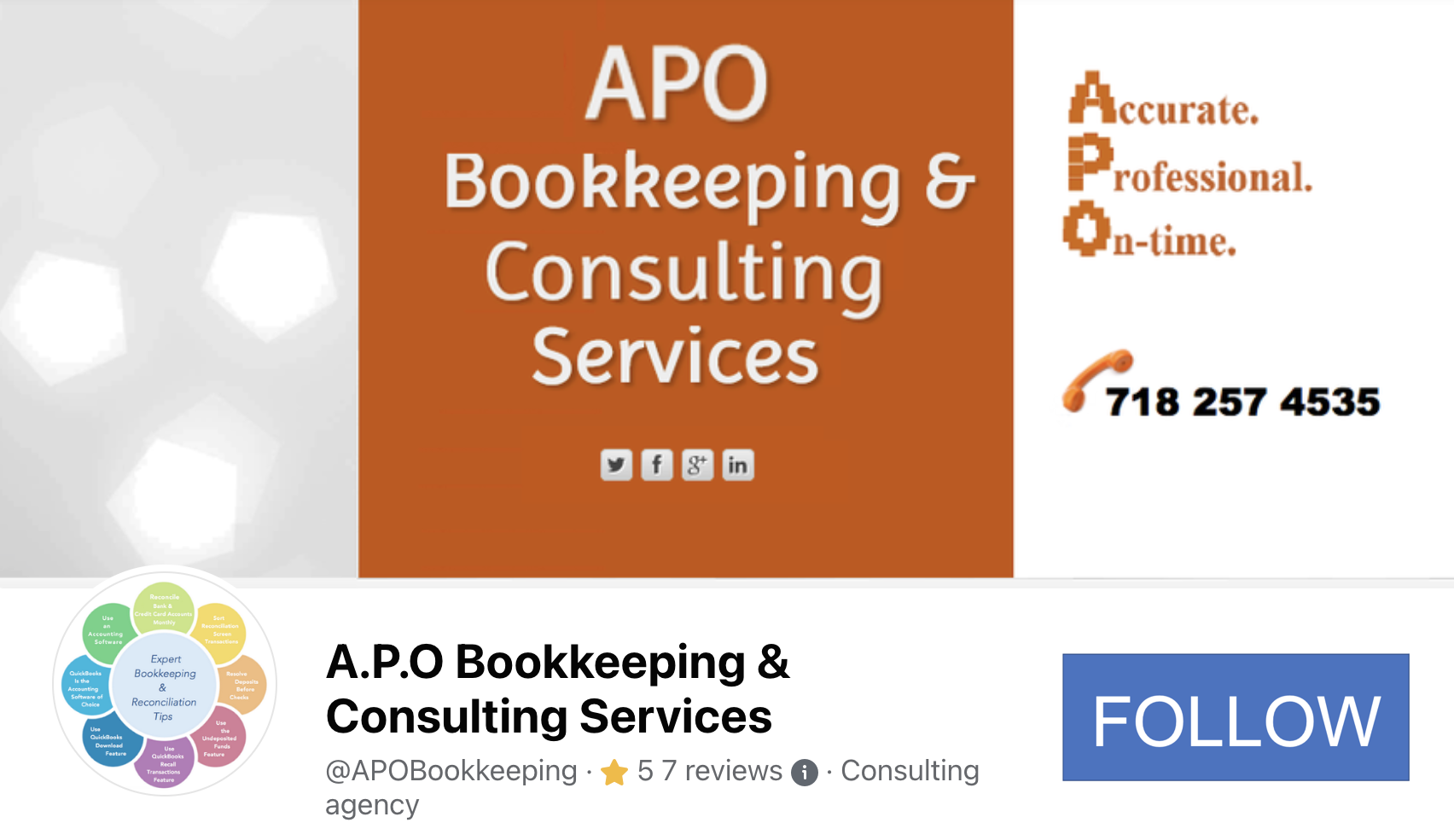
by Eugénie M. Nugent | Jun 10, 2015 | Business Tips
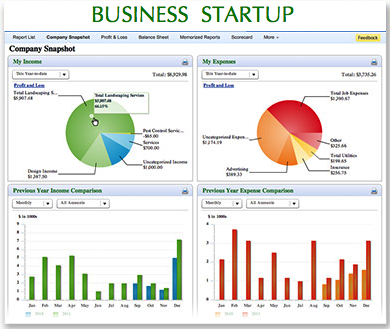 Depending on the type of business you are operating, you may not have a vast amount of bookkeeping to be done on the first day – or even week you open for business; however, you should setup a bookkeeping and accounting system at your earliest, and make an effort to document all transactions starting on the very first day. This may not be an easy feat since you are just starting up, but in order to not get lost in your financial tracking and status, and also be in the right with the relevant tax authorities, you need to get an early grip on your record-keeping.
Depending on the type of business you are operating, you may not have a vast amount of bookkeeping to be done on the first day – or even week you open for business; however, you should setup a bookkeeping and accounting system at your earliest, and make an effort to document all transactions starting on the very first day. This may not be an easy feat since you are just starting up, but in order to not get lost in your financial tracking and status, and also be in the right with the relevant tax authorities, you need to get an early grip on your record-keeping.
In addition to the abovementioned tip, here are a few more you can really use as a startup and moving forward:
 Consult with a CPA
Consult with a CPA
If you do not have an accounting background and possess little to no knowledge of accounting and accounting principles, you should consult with a Certified Public Accountant who will be able to advise you based on your business type and stance, on how to proceed. Be sure to inform them of all the important aspect of your business such as financing, loan notes, number of employees, theft protection, budgeting, etc. CPA’s are more expensive than bookkeepers, but they are better equipped to give pertinent advice and information for any business, because of their depth of study and experience. They will not be entering your transactions as a bookkeeper would; however, they will liaison with your bookkeeper or whoever is doing your bookkeeping to get the most effective system in place. Bookkeeping is necessary on an ongoing – often daily basis, but you can opt to engage a CPA on a quarterly basis and then at year-end in order to cut cost.
CPA Resource Links:
 Use software to handle your bookkeeping
Use software to handle your bookkeeping
Software is very convenient and versatile because they can do so much. Bookkeeping and accounting software are designed with bookkeeping and accounting in mind, and as such incorporate all the features that great bookkeeping and accounting require. You can of course use Microsoft’s Excel to enter your data; however, it will not be equipped to produce various reports about different aspects of your business as software such as Intuit’s QuickBooks would. In other words, documenting in Excel is better than not documenting at all, but using a system specifically designed for bookkeeping and accounting will yield better results in the short as well as long term. Your business may outgrow Excel, but it will not outgrow QuickBooks or Sage Peachtree for example. There is always the option of delegating or outsourcing your bookkeeping. You may have an employee upkeep your bookkeeping in your software system, or you can enlist an independent contractor or bookkeeping company to handle your bookkeeping remotely. I often recommend QuickBooks Online because it is so versatile, user-friendly, and convenient. You or your employee could be using it, at the same time your outsourced bookkeeper is making updates and reconciling.
 Keep your business and personal matters separate
Keep your business and personal matters separate
That starts with having separate bank and credit card accounts for your business that are used solely for business purposes. This will make it easier on your bookkeeping, saving you the headache of having to remember what transactions are personal vs business, and also allow your personal to stay personal in the event you are audited in the future. If you interchange business with personal and vice versa, and you have a business audit, you will be required to submit your personal information as well which can result in your personal being audited as well.
 Setup an effective filing system and maintain it
Setup an effective filing system and maintain it
A filing system is one of the most important components of any business. Invoices or sales receipts are going out and bills or purchases receipts are coming in, as well as purchase orders, estimates, statements, etc. In order to be able to access any of these, at any given time, they have to be stored in a designated place where anyone requiring them can retrieve them in a matter of seconds. There are several methods of filing system setup, but regardless of the one used, the important thing is to be able to locate whatever is needed at a moment’s notice. Customer Invoices does not need to be filed in paper form especially if they are done using a software and sent via email; however, bills and purchases receipts should either be scanned and filed on your computer or an alternate storage system, or be filed in paper form by date, vendor, or a reliable method of your choice. It is also critical to file bank and credit card statement together with their monthly reconciliation reports on a monthly basis, in a location where they can be easily retrieved. You will see as you go along the necessity of this.
Having a filing system and not maintaining it will absolutely defeat the purpose of having one in the first place. If files are removed for whatever purpose, they should be replaced as soon as they are through being used. If documents from the file need to be sent somewhere, it is advisable to make copies. This way you will not lose track of important paperwork.
 Institute a sequential numbering system for Invoicing
Institute a sequential numbering system for Invoicing
If you are issuing invoices to your customers, there must be a way that both you and your customer can reference individual invoices. Applying numbers to your Invoices in sequence or order will facilitate easy tracking and follow up. I have seen this on quite a few occasions, and this is the epitome of error and confusion.
 Access as much resources as you can – especially from your bank
Access as much resources as you can – especially from your bank
If you are a “one man show” like many startup businesses, you can easily become burnt out and overwhelmed with the tasks that are not the core of your business, yet necessary and fundamental to having a fully functional business. In situations like this, simple things like having your bank attach copies of presented checks to your statements as well as give you detailed printouts of your deposits, could really take the edge off and make it more convenient for you when you are ready to enter or verify information. You can also ensure your bank facilitates downloads to software such as QuickBooks which can eliminate unnecessary time spent manually entering every single transactions. You will still need to review, but with only a couple clicking of the mouse, you can save up to four times the time it would take to enter it all. Using your bank’s “bill pay” feature is another great way to save time, as well as allow more detailed information to be downloaded from your bank. As a “one man show”, working smarter instead of harder will get you through more smoothly. Think about all the institutions you do business with and how best they may be of service to you, and use them.
 Designate a specific area for your business – If home-based
Designate a specific area for your business – If home-based
If you work out of your home as many startup small business owners do today, create a distinctive space that is your business space. You can benefit greatly from this come tax time, but it is also crucial to have that space in the event of an audit. In addition, depending on the type of business you operate, you may have occasional customer visits and it will be much more professional to have a secluded designated area away from family distractions and disturbances.
 Document business expenses incurred prior to your first day of business
Document business expenses incurred prior to your first day of business
Many businesses either borrow money from outside sources for their business startup or use their own funds as loan or investment. These incurred expenses need to be recorded regardless of the source, in order to have accurate books. If you borrow from an outside institution you will need to keep track of the amount so that you can make proper and on-time payment(s), and also record loan interest which is usually added to the principal loan – periodically. If you loan your own business money, you will need to record it, so that you will be able to repay yourself once the business starts making solid profit. For monies invested in your business, you should document for the same reason and especially to make your balance sheet more appealing in the event you require a loan in the future. Financial Loan Companies are more apt to grant loans to businesses that the owners have invested in. You may also be able to write-off some of the cost for that tax year, or have them depreciated over a number of years depending on the amount. For all these reasons, it is important to input incurred expenses in your financial recording.
 Request a completed W9 Form from all eligible vendors
Request a completed W9 Form from all eligible vendors
You are required to file 1099 Misc forms at the end of each year for all individuals, as well as businesses that are not Corporations, to whom you have paid $600 and upwards via a check. If you use other methods of payments such as debit card, credit card, Paypal, or other third party payment network, you should not report those payments or portions of payments as those agencies are required to report them on form 1099-K. The form W9 is to be fully completed with the vendor’s identifying number, address, and signature affixed. I am including this in the startup as I have seen how difficult it can be when trying to reach vendors at the end of the year when the forms are due to get this information, and how futile it turns out many times. Try and get this information as soon as you realize you will be making qualifying check payments to a vendor. It only takes a few minutes to complete this form, and it will save you the headache and extra effort put into locating them at year-end.
 Generate proper payroll for employees instead of writing checks without payroll deductions
Generate proper payroll for employees instead of writing checks without payroll deductions
This is extremely important for businesses such as Daycare Centers where there is a requirement for a proportion of kids per adult supervision. If you are enrolled with twenty children for example, you cannot be the only caregiver, and must be reporting payroll deductions to the relevant authorities. Not having any payroll, or only yourself on payroll is a huge red flag and will most definitely summon an audit at some point. There are many payroll software on the market that you can use to get your payroll done, and also payroll companies such as ADP and Paychex that are designed to help small businesses pay their employees as well as remain compliant with tax agencies. Have your prospective employee(s) fully complete and sign form W4 which will ensure you have accurate information from which to setup their payroll account and make correct deductions and payroll. You must also file a new hire report with the relevant tax agencies in your State.
Starting your business is exciting, and there will be a number of core things to sort out and get through; however, in the rush to get your business off the ground, do not relegate your bookkeeping to the bottom of the “to-do” list. Find a way to incorporate it into your daily or weekly routine. Remember, there is always delegating or outsourcing! Not all tasks can be delegated or outsourced, but bookkeeping is one such task that most definitely can be. Start your business on the right footing, and continue in order to ensure its health, stability, and success.

by Eugénie M. Nugent | May 31, 2015 | Business Improvement

Image courtesy of clipartpanda.com
For example, I got a call a few days ago from a concerned small business owner on the upper east side of Manhattan saying that some of the transactions she is entering into QuickBooks is simply disappearing and nowhere to be found.
When I got there she opened the QuickBooks file in question, and indicated to me all the transactions she entered and where they should have been. I told her not to worry that I would find the transactions, especially because it is impossible for them to just vanish into thin air.
I have been using QuickBooks for such a long time that it did not take much time for me to realize that there had to be another file housing the “missing” transactions, and so I set out to view the other QuickBooks files that are on the Mac. She, however, proceeded to impede me from exiting the current QB file in question and from opening other QB files, constantly informing me that “none of those are the one in question, this is” which kept me from getting to the source of the problem and finding a solution. Within about 20 minutes of me just sitting there looking around the QB file that I know will not solve the issue, she was getting very frustrated saying, “I told you they are nowhere to be found, you cannot solve it!” She then started pacing, and taking phone calls and during her brief episodes of distractions I was able to look at the files in date order to determine the latest ones used.
The problem was just as I thought!
She was using three different QB files to enter her data, and of course there were like 10 transactions in one file, then the next 17 in another, and another 38 in the next. She was using a Mac and it is very easy for a situation like this to happen because of the way QuickBooks for Mac works. Unlike the PC versions, each time QuickBooks is backed up on a Mac, it creates a different backup file with a “Disk Image”. This makes it particularly easy to use a different QB file each time an update is done, without actually noticing until you really need to. That is one very big difference between the Mac and PC versions of QuickBooks.
I then summoned her over to the computer, showed her the “missing” transactions in question, and explained to her what was happening. She was ecstatic, and of course I was happy too that I had solved the “huge” problem she thought no one could, but I had to bring it to her attention that if she was there redirecting me each time I try to do what I am best at, the problem would not have been solved. What could have, and would have taken me a few minutes, ended up taking over an hour.
My point to small business owners or any person seeking assistance, is to give professionals in fields you do not specialize, a little room to do what needs to be done to help the particular situation. You can sit and watch, especially in instances where you feel your privacy could be breached; however, do refrain from directing a process you are not knowledgeable about – one you have sought help for. Think about it, if you could have solved it, you would!
Delegate, and fully let go!
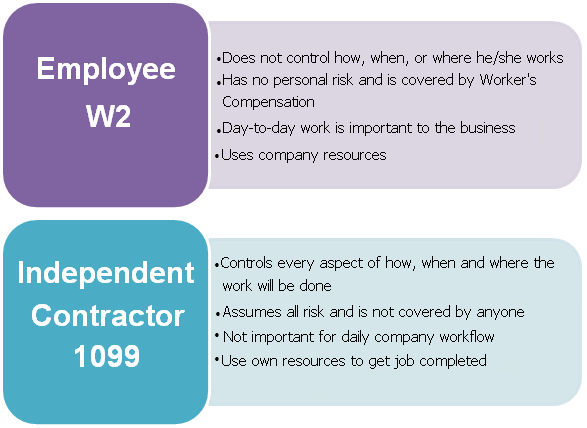
by Eugénie M. Nugent | Mar 31, 2015 | Business Tips
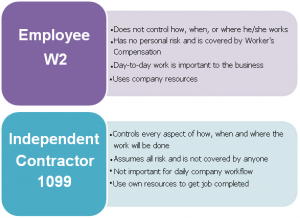 Many small business owners find it easier or more convenient to use independent contractors than to hire employees; but is the arrangement you have with a worker that of an independent contractor or that of an employee?
Many small business owners find it easier or more convenient to use independent contractors than to hire employees; but is the arrangement you have with a worker that of an independent contractor or that of an employee?
According to the IRS, there is a huge difference between an employee and an independent contractor, and they are adamant about doing all they can to ensure each is treated as who they really are by every organization. So how do they expect you to differentiate and treat each? Below are a number of key questions, based on IRS Guidelines, that when answered will lead you to the most suitable solution for your particular situation of who your worker should be – an employee or an independent contractor:
 How often does this person work for you? How regularly someone works for you is more important than how many hours they work for you. For example, an accountant who balances the books on a quarterly basis is definitely not an employee as is an assistant who comes in once per week on any day chosen by her, to catch up on the previous week.
How often does this person work for you? How regularly someone works for you is more important than how many hours they work for you. For example, an accountant who balances the books on a quarterly basis is definitely not an employee as is an assistant who comes in once per week on any day chosen by her, to catch up on the previous week.
 Do you set the person’s schedule? A key indicator of employment status is how much control you have and exercise over a worker’s schedule. Independent contractors set their own schedule, employees do not.
Do you set the person’s schedule? A key indicator of employment status is how much control you have and exercise over a worker’s schedule. Independent contractors set their own schedule, employees do not.
 Do you instruct or supervise the worker? While you are probably providing all workers with some guidance, how much control you have over their approach helps determine their status. Independent contractors listens to what you want to get done, but use their own approach to get it done. Employees are often told what, how, and when to do what.
Do you instruct or supervise the worker? While you are probably providing all workers with some guidance, how much control you have over their approach helps determine their status. Independent contractors listens to what you want to get done, but use their own approach to get it done. Employees are often told what, how, and when to do what.
 If additional workers are needed for a job, who hires them? The amount of control you have over a worker’s decision-making power is an important factor in determining their employment or non-employment status. Independent contractors are responsible to get the task they are given done and to hire help if they need to. Employees do not hire additional help, their employers do.
If additional workers are needed for a job, who hires them? The amount of control you have over a worker’s decision-making power is an important factor in determining their employment or non-employment status. Independent contractors are responsible to get the task they are given done and to hire help if they need to. Employees do not hire additional help, their employers do.
 Who provides the tools and materials necessary to complete the job? Employees use the company’s equipment and supplies; independent contractors provide their own.
Who provides the tools and materials necessary to complete the job? Employees use the company’s equipment and supplies; independent contractors provide their own.
 How is the worker paid? The timing and method of payment are important indicators of worker status. Employees are often on payroll, whereas independent contractors invoice for payment. If the person is paid regularly, he is most likely an employee. However, those who are paid only when a project is complete, or a sale is made, may be an independent contractor. (A bit blurry, but looking at the entire picture will dim the blur.)
How is the worker paid? The timing and method of payment are important indicators of worker status. Employees are often on payroll, whereas independent contractors invoice for payment. If the person is paid regularly, he is most likely an employee. However, those who are paid only when a project is complete, or a sale is made, may be an independent contractor. (A bit blurry, but looking at the entire picture will dim the blur.)
 Do you reimburse this worker for any business or travel expenses? Companies generally reimburse employees for expenses, while independent contractors pay their own to get the job or task complete and will add all expenses to their Invoice.
Do you reimburse this worker for any business or travel expenses? Companies generally reimburse employees for expenses, while independent contractors pay their own to get the job or task complete and will add all expenses to their Invoice.
 Can this worker’s decisions impact their own profits or losses? Independent contractors generally take on a degree of financial risk that employees do not. Renting an office, maintaining equipment, advertising and having multiple clients can all indicate profit-or-loss risk. Employees are risk free and are also covered with workers’ compensation.
Can this worker’s decisions impact their own profits or losses? Independent contractors generally take on a degree of financial risk that employees do not. Renting an office, maintaining equipment, advertising and having multiple clients can all indicate profit-or-loss risk. Employees are risk free and are also covered with workers’ compensation.
 Is this person hired to work indefinitely, or for a specific project or time period? How long someone works for you is one of the key considerations in determining employee status. Someone who works indefinitely is “probably” an employee. Someone who works on specific project or for a fixed time period may be an independent contractor. (This is where the lines start blurring for me.) If someone is working for me once per year and I want to have them working for me until I am out of business or he quits, then this person definitely does not sound like an employee to me even though he is working with me indefinitely. But again, looking at the big picture will minimize this blur.
Is this person hired to work indefinitely, or for a specific project or time period? How long someone works for you is one of the key considerations in determining employee status. Someone who works indefinitely is “probably” an employee. Someone who works on specific project or for a fixed time period may be an independent contractor. (This is where the lines start blurring for me.) If someone is working for me once per year and I want to have them working for me until I am out of business or he quits, then this person definitely does not sound like an employee to me even though he is working with me indefinitely. But again, looking at the big picture will minimize this blur.
 Are the person’s activities essential to your day-to-day business? The role a person plays in your broader business is a critical factor. If someone has to keep the business pumping such as a receptionist at a hotel, or a chef at a restaurant, then of course they are employees.
Are the person’s activities essential to your day-to-day business? The role a person plays in your broader business is a critical factor. If someone has to keep the business pumping such as a receptionist at a hotel, or a chef at a restaurant, then of course they are employees.
In short, if:
- You the employer control how, when, and where this person works, this worker is an employee.
- This person takes little or no personal financial risk, this worker is an employee.
- This person’s work is relatively important to your business, this worker is an employee.
- This person uses your resources – computer, printer, office supplies, etc., this worker is an employee.
The IRS has got to be one of the most complicated entities around. Nothing is ever black or white and the gray area seems to be endless. Yet, we all have to ensure we are in compliance with their many rules and regulations at all times. For this reason, it is usually a great idea to consult with a tax or legal advisor before deciding on any factor as it relates to the government taxing agencies.
Commonly Asked Question:
Can an Employee also be an Independent Contractor for the same company? The answer by Larry Shaub, CPA, CHRS, CPP of Accupay.

by Eugénie M. Nugent | Jan 12, 2015 | Business Improvement

Photo Courtesy of APO Bookkeeping
There is always room for improvement, and what better time to take stock, analyze, and set in motion the changes necessary to facilitate improvement than at the beginning of a new year. Here are five surefire things you can do to launch your business to new heights.
- Afford Your Business a Website (With a Blog)
- Formulate a better relationship with your Customers or establish one
- Gain New Customers by Marketing to Your Target Prospects
- Know your business trend. Know your numbers.
- Delegate tasks you do not do well, or enjoy doing
1) Afford Your Business a Website (With a Blog)
Your business is doing extremely well and you do not have a website. Awesome! Kudos to you! But guess what, there is always room for improvement, and your business can still do better. A business without a website and a blog is like an unpublished book; you have it but no one knows about it.
Unless you are Walmart, Staples, Home Depot or any other well established brand, operating a business without a website and a blog is futile if generating leads and having conversions is your goal for your business. The Internet is the number one place people turn to for information whenever they need to, and if you are not there you will not be found in their search results – even though your product and/or services may well be what they are looking for. You are missing out on the competitive edge! Adding a blog to your website is the best way to increase traffic to your website so more people can know about you and your services. The more visitors you get, the more leads you can generate. And the more leads you generate, the more business you will close.
- Write quality content
Of course, you need to write content that people will actually be interested in and want to read! Your goal here is to get publicity and ultimately gain conversions, but in order to gain more high quality leads you will need to put some quality time and effort into your blog construction and presentation. Write articles relative to your business on a regular basis and publish them. They do not have to be long and winding; quality over quantity is king any day! Don’t just slop something up in two minutes and call it a post, if you do not have time to write a decent post, don’t post anything at all. A bad, sloppy post can actually do your business more harm than good. Your blog represents you and your brand, so put some thought into what you publish. As Melinda Emerson the Small Biz Lady warns, “There’s no separating you from your business, and you have to brand yourself accordingly.“
- Promote Your Blog Posts
Now what purpose would it serve if you put all that effort into writing content that you think will be just what your prospects want, if you do nothing after writing them and hitting the publish button. None whatsoever! You must promote your blog content to social media sites, which is the only way anyone will know they are available and be able to read them. Apps, such as HootSuite, is a useful tool that allows you to manage multiple social media network accounts in one easy to use interface. You can schedule updates ahead of time, and publish across platforms at once, which is very convenient as it gets the word out on many platforms with minimal time and effort. With only 24 hours in a day, it is critical to make every minute count.
2) Formulate a better relationship with your Customers or establish one
Yes, you may have employees who are designated to various positions having direct contact with your customers, but in taking your business to the next level, you must periodically reach out to your customers and make a direct connection. There is a difference when a customer hears from a business owner than an employee. Connecting directly shows that they are valued, which puts you at an advantage where you can also gain valuable insight that can help enhance your business’ bottom line. This may not be practical for large companies with a broader customer base; however, they can devise an effective customer support team that will provide their customers with the best customer service possible. Your customers will let you know how satisfied or dissatisfied they are, at which point you can get to the drawing board and aim to please the disgruntled. As humans, we are built to want better, and as such we are always looking for ways to improve. Your customers are no different! They want the best customer service as well as the best product and service for their dollar, and will not hesitate to look elsewhere.
3) Gain New Customers by Marketing to Your Target Prospects
It has been said time and time again, and cannot be reiterated enough, how important it is to: 1) have a niche market, 2) know your target audience, and 3) develop strategies geared towards them. Marketing is a must if any business is to succeed. If done right, it will yield favorable but if done wrong, you will waste valuable time yielding zero results. Have a niche market so you know whom you are targeting. For example, if you are marketing to college students, you will have an idea of what to include in your marketing material, where to market, and when to promote your goods or services. Stop wasting valuable time and resources marketing to everyone, and cater to your target audience.
4) Know your business trend. Know your numbers.
Many small businesses that have closed their doors could have been around today had they kept score of their business’ numbers on a regular basis. They consistently operated at a loss, with minimal to non-existent cash flow, and yet failed to keep score of their daily, weekly, or at the very least – their monthly numbers. You should be improving, not declining. Keeping score of your numbers will allow for early intervention where you can identify areas that you can make improvement on and areas you can eliminate. Know what is taking place in your business with your business finances. Pay attention to your financials! Even though you may designate certain financial aspects of your business to enable seamless operation especially when you are unavailable, you should find a way to know that what should be happening is actually happening, and nothing more or less. You must have a firm understanding of your cash position every day, which can be accomplished by carefully managing and monitoring your banking relationship, and your books. Also, does your business require more funding at certain times of the year than others? Do you usually have down-time at certain times during the year? What will you be doing during that time? And, how will you maintain your business paying those overhead costs? These are some of the questions you should be able to answer at any given time.
5) Delegate tasks you do not do well, or enjoy doing
Even as a small business owner, there will be areas of the business that must be taken care of that is either not in your scope of knowledge or a part you enjoy doing. The latter will drain you emotionally and physically, and may even put a damper in your passion for your business. We are living in an era of technological advancement with software and information everywhere, and as such, many business owners looking to save on cash, are attempting to do it all by themselves, even without the skill base necessary. But mistakes can be costly, and in many cases there is only a very slim margin for error. You know your organization best, as well as your capabilities. Don’t waste valuable time mulling over subordinate or mundane tasks that you could otherwise designate! Take stock and delegate the tasks that are weighing you and your business down, and prepare to soar.
Implement the above-mentioned five changes and and watch your business flourish in an upward chain of improvement.
What are your thoughts? Feel free to express in the comment section below.

 Depending on the type of business you are operating, you may not have a vast amount of bookkeeping to be done on the first day – or even week you open for business; however, you should setup a bookkeeping and accounting system at your earliest, and make an effort to document all transactions starting on the very first day. This may not be an easy feat since you are just starting up, but in order to not get lost in your financial tracking and status, and also be in the right with the relevant tax authorities, you need to get an early grip on your record-keeping.
Depending on the type of business you are operating, you may not have a vast amount of bookkeeping to be done on the first day – or even week you open for business; however, you should setup a bookkeeping and accounting system at your earliest, and make an effort to document all transactions starting on the very first day. This may not be an easy feat since you are just starting up, but in order to not get lost in your financial tracking and status, and also be in the right with the relevant tax authorities, you need to get an early grip on your record-keeping. Consult with a CPA
Consult with a CPA Use software to handle your bookkeeping
Use software to handle your bookkeeping Keep your business and personal matters separate
Keep your business and personal matters separate Setup an effective filing system and maintain it
Setup an effective filing system and maintain it Institute a sequential numbering system for Invoicing
Institute a sequential numbering system for Invoicing Access as much resources as you can – especially from your bank
Access as much resources as you can – especially from your bank Designate a specific area for your business – If home-based
Designate a specific area for your business – If home-based Document business expenses incurred prior to your first day of business
Document business expenses incurred prior to your first day of business Request a completed W9 Form from all eligible vendors
Request a completed W9 Form from all eligible vendors Generate proper payroll for employees instead of writing checks without payroll deductions
Generate proper payroll for employees instead of writing checks without payroll deductions









